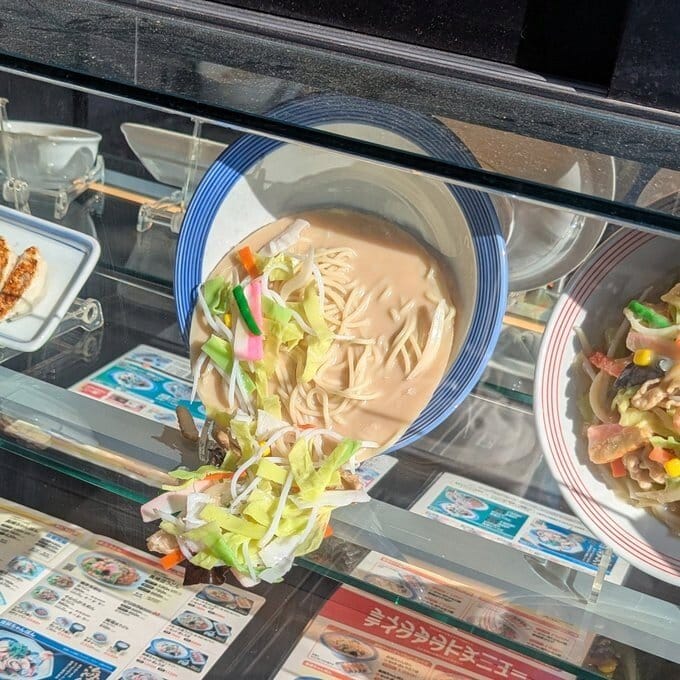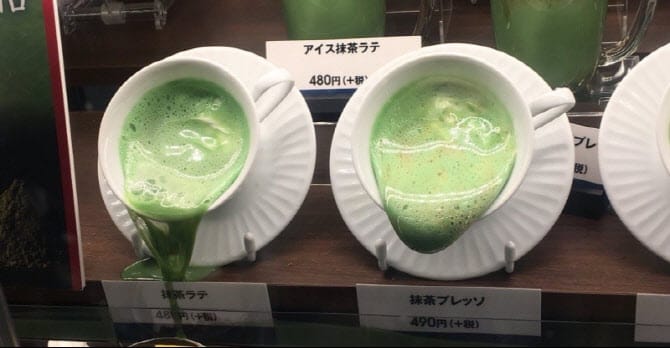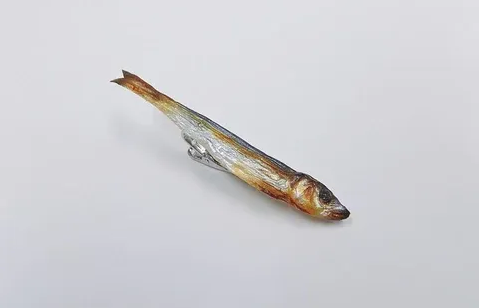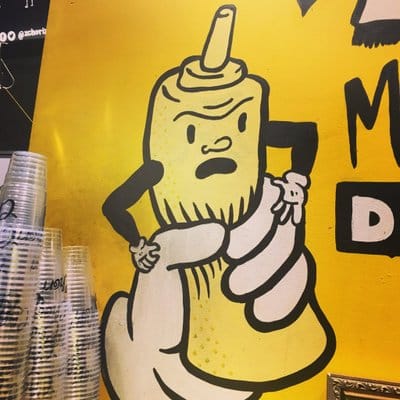I fell down the fake food rabbit hole

It all started with Japan's recent heat wave. As the temperatures soared, the artificial food models common in so many restaurant windows began melting.
I was agog. I pored over the photographs that popped up online, ferreted out a business newspaper's article about the catastrophe, shivered over the sad spectacle of artificial noodles oozing from their bowl in a landslide of lettuce and weirdly pink broth.
My unease may have sprung from my childhood dismay when the Wicked Witch of the West collapsed into a black-and-green puddle, second only to the flying monkeys in my mental shop of horrors.

I was first mesmerized by Japan's food models on a trip to Tokyo some years back. I dawdled in front of restaurant windows so long that my friends had to prod me along. The replicas of menu dishes had an almost-but-not-quite lifelike quality to them, a hyper-reality, as if they existed in a culinary version of the Uncanny Valley.
I shopped the famous Kappabashi food street where such models are sold, thinking I would bring back some of my own fake foodstuffs for a lark. Overwhelmed by the choices, I bought nothing—although I kicked myself later for not acquiring a life-size replica of the Japanese soft-serve cones that I was learning to love. Back home, it would have joined my floppy rubber fried egg and various motorized pieces of nigiri.
Then, on a recent trip to Brussels, I was riveted by the fake waffles on display at every turn. The fact that none of their syrup, whipped cream or ice cream garnishes were melting in the heat snapped me to the fact that they weren't real.
So how could Japan's fake food apocalypse happen? Apparently an extra ten or twenty degrees Fahrenheit can make a big difference. It had been Japan's hottest July on record. August was even hotter. On Tuesday, August 5, temperatures broke records in at least two cities at around 107 degrees F.
I started Googling. I learned that food models are usually made of polyvinyl chloride (PVC), silicone or chemical resins, none of which hold up to very high temperatures. Climate change is doing the genre no favors.
There are multitudinous online videos documenting the craftsmanship involved in making fake foods, I discovered. Just take a look at one of the scores of them—I'm not kidding—chronicling the intricate birth of a head of fake lettuce. Honor is due.
I read about the food-replica industry, which is kind of a big deal in Japan. Shohukin sampuru is the Japanese phrase for the models, which translates as
"food samples." Gujo Hachiman, a riverside town in Gifu Prefecture, is celebrated as the birthplace and center of plastic food, which dates from the 19th century. (Wax was the medium back then.)
You can actually visit fake-food workshops and even make your own food replicas. Steps in the highly detailed process: making a mold; casting the mold with the chosen substance; painting to make the replica lifelike; and assembling the various parts of the dish. The results can be far more expensive than the real thing. Indeed, I learned that restaurants that can't afford certain pricy models rent them instead.
I came across a company, Nippon Dom, that will hand-craft "lifelike" food and drink replicas from photos you send them—making models accessible across the globe, and across cuisines. I wondered if they had supplied any of the waffles I gawked at in Brussels.
Finally in my online wanderings, I happened upon the product catalogue of fakefoodjapan.com, and I may never recover. I am haunted by visions of a bacon-and-egg hairband, and a magnificent dried-sardine tie clip.

Scrolling through, I convinced myself that holiday and birthday gift-giving would never stump me again. Lovely, life-size crab claw keychains. A silvery business card case bedazzled with a field of rice, centered on a ruby-hued pickled plum (umeboshi) and a scatter of black sesame seeds.
A pencil stand in the form of a lacy lotus root. A smartphone stand sprouting from a bowl of ramen. Earrings dangling life-size boiled quail egg halves or vivid red slices of cherry tomato. Handbag and cellphone charms. Magnets. Unspeakably weird USB flash drives.
Go ahead, take a browse through their catalogue. I'm betting you'll fall down the fake food rabbit hole, too.

Member discussion